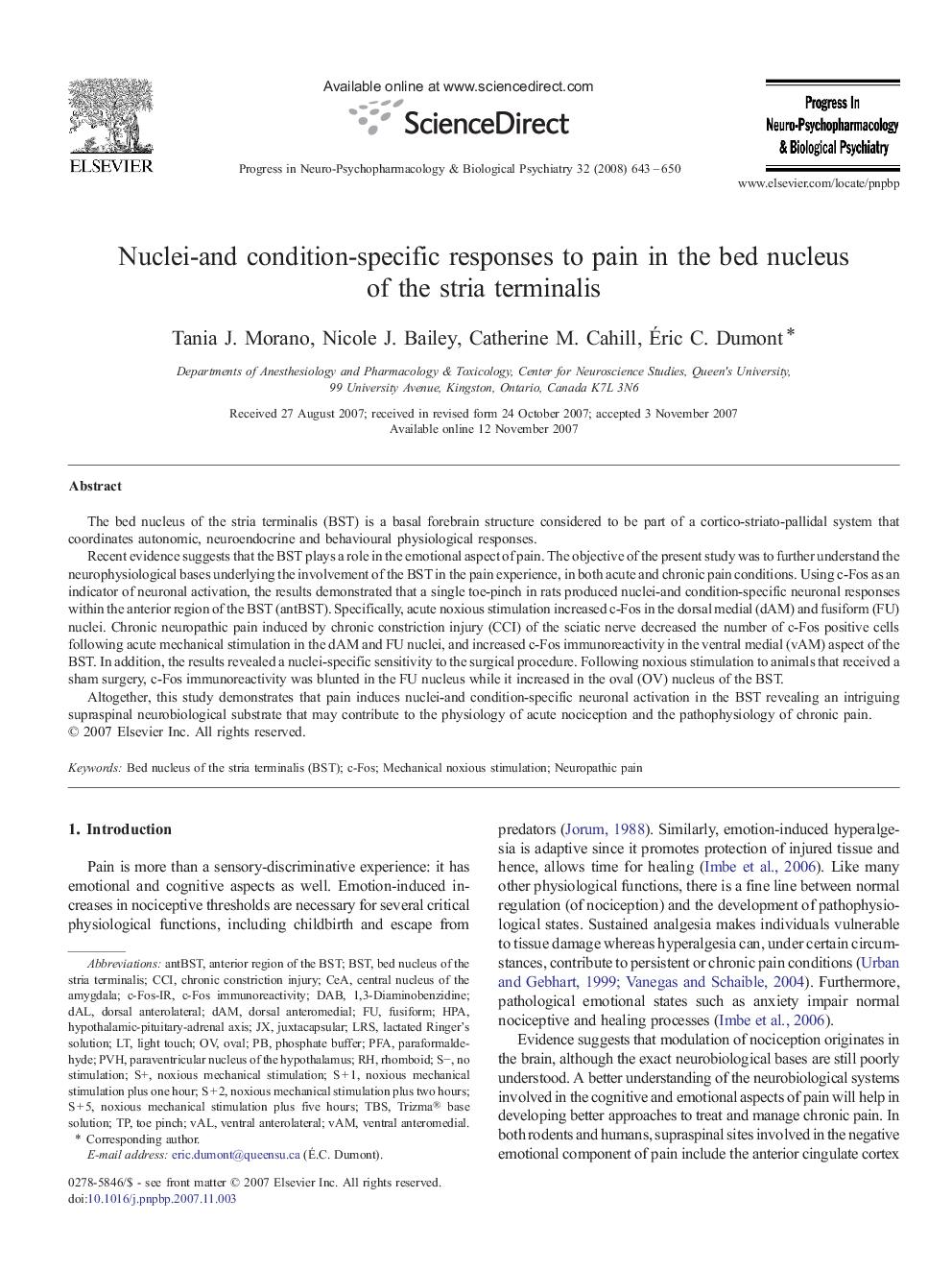| Article ID | Journal | Published Year | Pages | File Type |
|---|---|---|---|---|
| 2565841 | Progress in Neuro-Psychopharmacology and Biological Psychiatry | 2008 | 8 Pages |
The bed nucleus of the stria terminalis (BST) is a basal forebrain structure considered to be part of a cortico-striato-pallidal system that coordinates autonomic, neuroendocrine and behavioural physiological responses.Recent evidence suggests that the BST plays a role in the emotional aspect of pain. The objective of the present study was to further understand the neurophysiological bases underlying the involvement of the BST in the pain experience, in both acute and chronic pain conditions. Using c-Fos as an indicator of neuronal activation, the results demonstrated that a single toe-pinch in rats produced nuclei-and condition-specific neuronal responses within the anterior region of the BST (antBST). Specifically, acute noxious stimulation increased c-Fos in the dorsal medial (dAM) and fusiform (FU) nuclei. Chronic neuropathic pain induced by chronic constriction injury (CCI) of the sciatic nerve decreased the number of c-Fos positive cells following acute mechanical stimulation in the dAM and FU nuclei, and increased c-Fos immunoreactivity in the ventral medial (vAM) aspect of the BST. In addition, the results revealed a nuclei-specific sensitivity to the surgical procedure. Following noxious stimulation to animals that received a sham surgery, c-Fos immunoreactivity was blunted in the FU nucleus while it increased in the oval (OV) nucleus of the BST.Altogether, this study demonstrates that pain induces nuclei-and condition-specific neuronal activation in the BST revealing an intriguing supraspinal neurobiological substrate that may contribute to the physiology of acute nociception and the pathophysiology of chronic pain.
